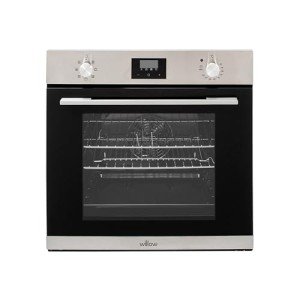The Rise of Electric Integrated Ovens and Hobs: A Comprehensive Guide
On the planet of contemporary kitchen areas, electric integrated ovens and hobs have ended up being important appliances, offering effectiveness, style, and benefit. As cooking practices evolve, so too do the innovations that make cooking much easier and more enjoyable. This post explores the features, advantages, setup factors to consider, and maintenance ideas for electric integrated ovens and hobs, while addressing typical often asked questions.
What is an Electric Integrated Oven and Hob?
An electric integrated oven and hob is a mix cooking device that effortlessly fits into kitchen cabinets. Designed to optimize area and visual appeal, these appliances use the double performance of an oven and a hob (cooktop) without compromising on performance.
Key Features of Electric Integrated Ovens and Hobs
- Space-Saving Design: These appliances are built to fit neatly into kitchen systems, making the most of readily available space.
- Touch Control Panels: Many models include touch-sensitive controls for simple operation and streamlined appearance.
- Advanced Cooking Functions: Options like convection baking, grilling, and steaming cater to numerous cooking styles.
- Energy Efficiency: Electric integrated ovens generally supply better thermal effectiveness compared to standard gas designs.
- Safety Features: Child locks, automated shut-off, and heat indicators improve security during cooking.
Benefits of Electric Integrated Ovens and Hobs
The adoption of electric integrated ovens and hobs in families includes numerous advantages that attract a large range of cooking enthusiasts, from amateur cooks to expert chefs. Here are a few of the most significant benefits:
1. Efficiency and Consistency
- Uniform Cooking: Electric ovens and hobs offer constant heat distribution, leading to evenly prepared food.
- Lowered Cooking Times: Advanced innovations, such as induction heating, can significantly lower cooking times.
2. Easy to Clean
- Smooth Surfaces: The streamlined surface areas of integrated styles get rid of food traps, making them simple to wipe down.
- Self-Cleaning Options: Many contemporary ovens featured self-cleaning functions that streamline upkeep.
3. Visual appeals
- Modern Look: An integrated design offers a unified appearance in the kitchen, making the space appear more modern-day and curated.
4. Versatility
- Multi-Functionality: Cooking choices range from baking and barbecuing to frying and simmering, catering to varied cooking needs.
- Time-Saving: Can prepare several meals at the same time, optimizing meal preparation.
5. Cost-Effectiveness
- Lower Energy Bills: Electric appliances are generally more efficient, leading to potential savings on energy expenses gradually.
Setup Considerations
Integrating electric ovens and hobs into your kitchen needs proper preparation and consideration. Here are some necessary aspects to keep in mind:
- Space Measurement: Ensure that the measurements of the home appliance line up with the designated setup area.
- Electrical Requirements: Check for sufficient electrical supply, consisting of voltage and amperage to support the home appliance.
- Ventilation Needs: While electric appliances do not need gas ventilation, sufficient space for airflow is still necessary.
- Cabinet Compatibility: Ensure cabinets can support the combined weight of the oven and hob.
- Expert Installation: Engaging with a certified service technician is recommended for safe and certified setup.
Maintenance Tips for Electric Integrated Ovens and Hobs
Maintaining an electric integrated oven and hob makes sure longevity and ideal efficiency. Here are some upkeep practices:
- Regular Cleaning: Wipe down surface areas regularly and ensure spillages are cleaned up as soon as possible.
- Examine Seals: Ensure that door seals are intact to avoid heat loss, which can affect cooking effectiveness.
- Self-Cleaning Cycle: Utilize the self-cleaning feature if available, at least once every couple of months.
- Inspect Wiring and Cords: Check for harmed cables or connections to avoid electrical risks.
- Set Up Professional Servicing: Regularly scheduled service can identify concerns before they become substantial problems.
Often Asked Questions (FAQs)
1. Are electric ovens better than gas ovens?
Electric ovens provide more constant heat and often have functions like convection cooking, which can improve the cooking experience. Many users discover them much easier to clean up and safer than gas ovens.
2. What is built under electric oven and hob packages in between induction and ceramic hobs?
Induction hobs use electromagnetic fields to heat pots and pans directly, while ceramic hobs utilize electric coils beneath a glass surface to heat up the cooking surface area. Induction hobs are normally more energy-efficient and much faster than ceramic choices.
3. Can I set up an electric oven and hob myself?
While it is possible for competent DIY enthusiasts to install their appliances, professional installation is advised to make sure compliance with safety standards and regional guidelines.
4. How do I understand if my oven is carrying out effectively?
Monitor cooking times and temperature level settings. If food is regularly undercooked or overcooked, it may indicate that the oven requires recalibration or maintenance.
5. How can I enhance the life expectancy of my electric oven and hob?
Regular cleaning, appropriate use, and routine expert maintenance can considerably extend the lifespan of these appliances. Avoiding fast temperature changes can likewise help in preserving their stability.
Electric integrated ovens and hobs represent the evolution of cooking appliances, weding functionality with modern-day style. Their efficiency, ease of usage, and aesthetic appeal make them an outstanding choice for modern cooking areas. As cooking technology continues to advance, both home cooks and culinary specialists can anticipate even greater developments in the realm of electric integrated cooking solutions.
With the ideal maintenance and installation practices, these appliances can enhance both the cooking experience and the general performance of the kitchen area.

